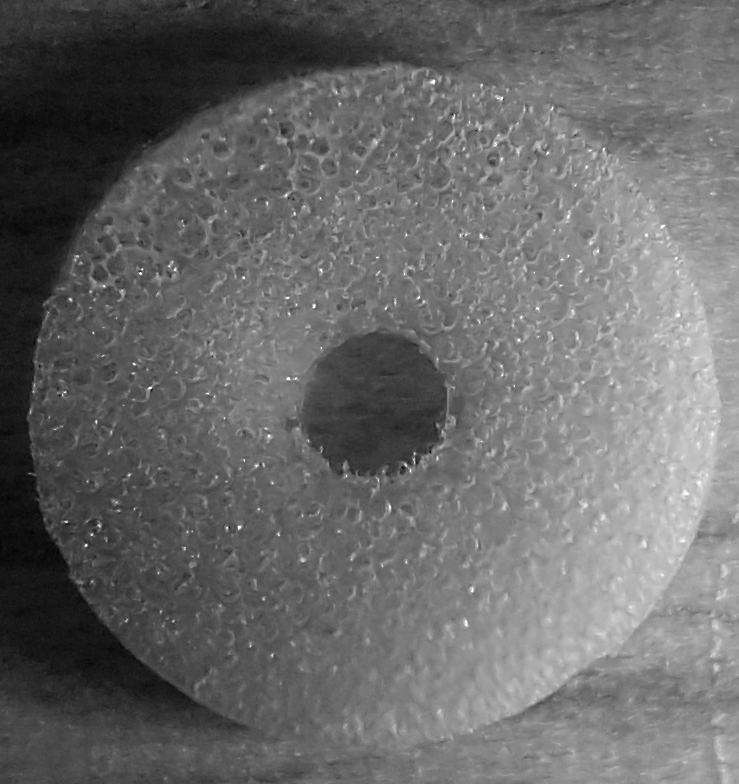Solid vs. Foamed Cable Insulation
by Anixter
Communication cables use a variety of insulation materials to achieve precise electrical characteristics. Without this precise control, the successful transmission of communication signals would be impossible, rendering modern communication equipment useless.
What is insulation?
Cable insulation can be identified as the part of a cable that is typically applied directly to conductors. Cable insulation works because it has a high resistance to the flow of electrons. The resistance provides electrical insulation from other cable components. Insulation acts like the pipe that keeps the flowing electrons contained inside the conductor.
One of the key considerations for communication cable designers is the insulation’s dielectric constant. Generally speaking, a lower dielectric constant is desirable in a cable because it results in less capacitance and less stored charge on the cable. This allows the majority of the charge, or signal, to get to its desired destination.
Solid insulation doesn’t mean it’s rigid
Solid insulation is the most common kind of insulation used in the wire and cable industry. It is a layer of solid polymer that covers the conductor. It should not have voids or bubbles in it. Solid insulation provides durable mechanical and electrical protection for the conductor and is generally lower in cost and complexity to manufacture than foamed insulation. Made of a plastic or rubber polymer, solid insulation remains flexible while sacrificing very little crush and impact resistance.
Simple and low-cost with excellent mechanical and electrical performance, solid insulation is used for control, power, instrumentation and flexible wire and cable applications. Some solid insulation materials have a dielectric constant sufficiently low enough that they can be used to make excellent performing communication cables. A low and stable dielectric constant is the electrical characteristic needed to achieve high levels of performance in the most demanding communication cables. As you might expect, the polymers that provide low dielectric constants tend to be expensive.
High performance from reduced material
Foamed insulation usually has a lower dielectric constant than solid insulation and is therefore used almost exclusively for high-performance communication cables. It is comprised of a layer of extruded polymer with bubbles of air or nitrogen throughout. These gas bubbles give the foamed insulation its low dielectric constant. Because the gas itself has a low dielectric constant, the gas and polymer blend reduces the dielectric constant relative to the solid version of a given polymer. In fact, foamed insulations can achieve very high levels of electrical performance, which is often necessary for communication cables. The nature of foam allows the insulation to be thinner than a solid insulation that has comparable electrical characteristics. Obviously, the reduced thickness is useful in applications where space is limited.
One drawback associated with the cellular structure of foamed insulation is that the bubble size, shape and dispersion throughout the foam are sometimes difficult to control. Precise control can provide outstanding performance, but that performance comes at a cost. Variations in foam density, bubble size and location can drastically reduce the performance of a communication cable. It is important to understand that the added difficulty may increase the cost enough to offset the reduction in cost that comes from the reduced polymer volume.
Handle with care
Foamed insulation is not as physically robust as solid insulation. Modern materials can have a foam expansion rate as high as 80 percent, which means there is more gas than polymer in the cable insulation. Having such high levels of gas reduces the density and mechanical durability of the insulation and may result in a kink in the insulation around tight bends or greater chance of being crushed. Kinked and crushed insulation can cause a significant variation in the electrical characteristics, often greatly reducing the performance of the cable. Modern manufacturing techniques have allowed for extremely high-performance products with outstanding quality. Understanding the role of the insulation and its special handling requirements should make your next application of foamed insulation more successful.































































